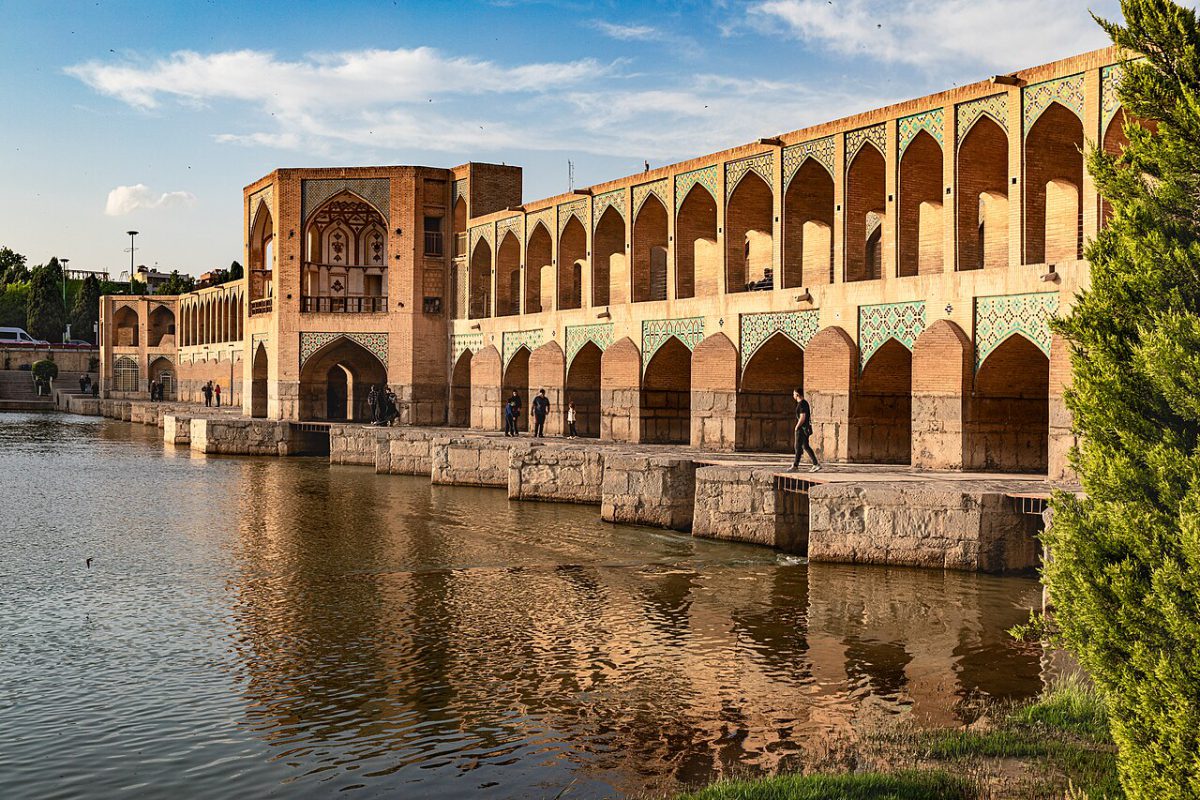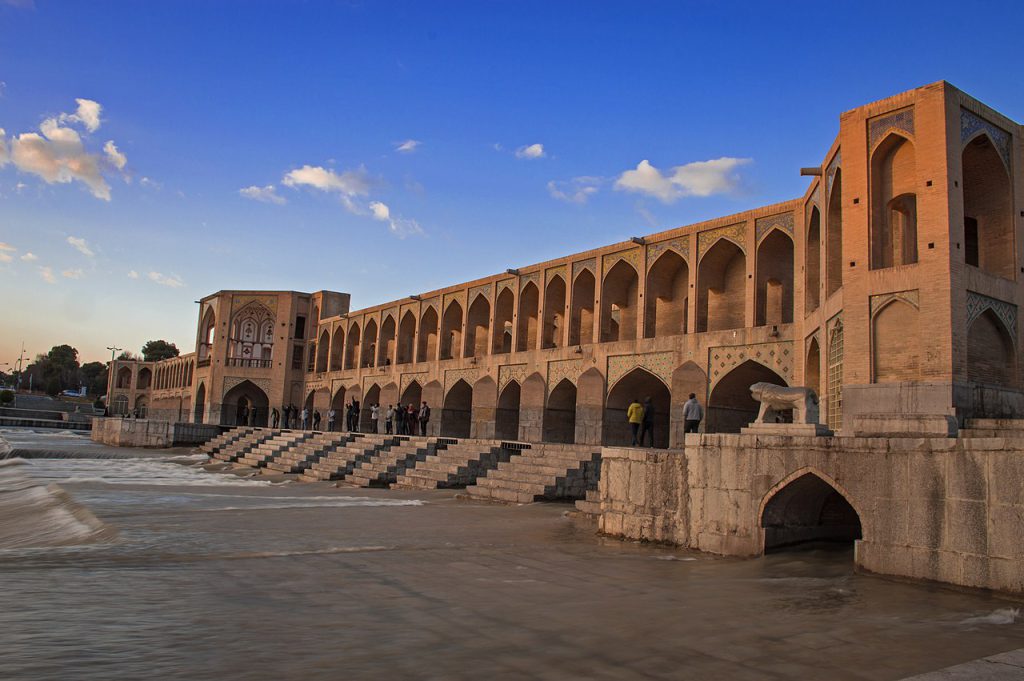Table of Contents
Isfahan historical bridges are more than mere passageways; they are enduring symbols of the city’s rich cultural tapestry. Each bridge, with its unique architectural design, reflects the elegance and sophistication of an era long past. The intricate patterns and arches of these structures are not just feats of engineering but also works of art that tell tales of the city’s historical journey. These bridges, gracefully spanning the Zayandeh Rud River, serve as both functional structures and poetic links between the city’s storied past and its vibrant present.
As you traverse these iconic bridges, you step into a living history that has witnessed countless events and eras. The bridges have borne silent testimony to the ebb and flow of life in Isfahan, from the bustling markets and caravans of the past to the modern-day hustle. Their enduring beauty and significance make them not only practical pathways but also cherished landmarks that continue to connect the heart of Isfahan with its heritage.
Here are the top 5 historical bridges of Isfahan to explore:
Si-o-Se Pol
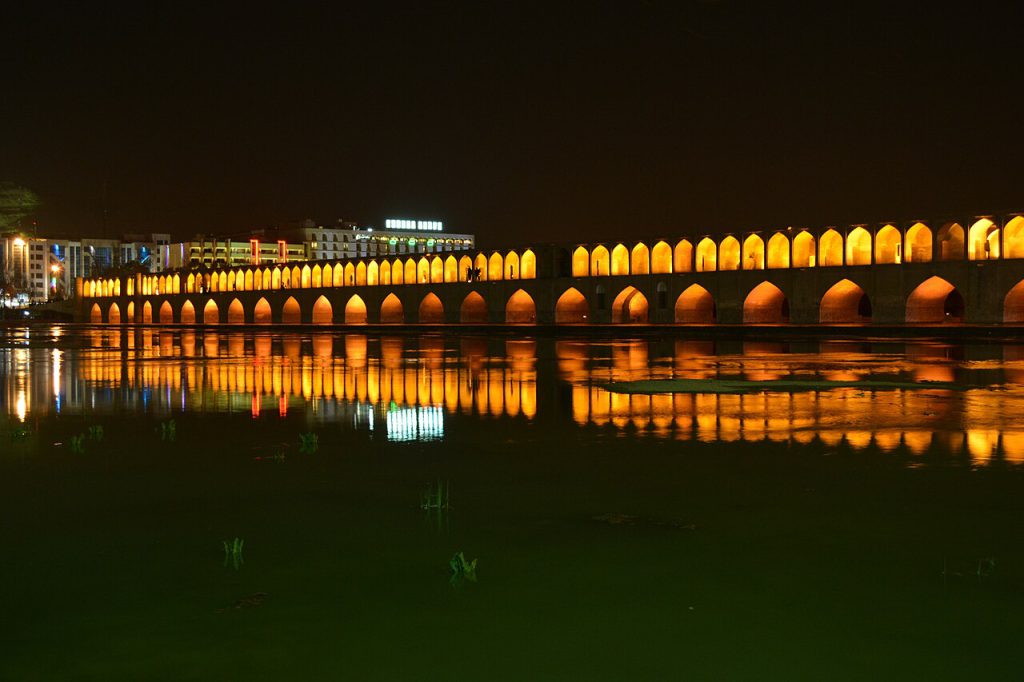
The Si-o-Se Pol, or the Bridge of 33 Arches, is an architectural masterpiece that has become an enduring symbol of Isfahan. Constructed between 1599 and 1602 under the supervision of Allahverdi Khan Undiladze, a chancellor of Shah Abbas the Great, this bridge was designed to connect Isfahan with the Armenian suburb of New Julfa. Stretching an impressive 295 meters in length and 13.75 meters in width, it stands as the longest bridge over the Zayandeh Rud River, blending functionality with artistic grandeur. The bridge’s 33 arches, elegantly stacked in two superimposed rows, give it a unique aesthetic that has captivated visitors for centuries.
Beyond its structural significance, Si-o-Se Pol once dazzled with interior paintings, some of which were noted by travelers for their erotic themes. Although these artworks have faded with time, the bridge’s grandeur remains undiminished. Serving both as a bridge and a dam, Si-o-Se Pol’s vaulted arches and central location have made it the most renowned bridge in Isfahan. The name “Si-o-Se Pol” itself is a nod to the bridge’s defining feature, highlighting its architectural brilliance that continues to connect the city’s past and present.
Khaju Bridge
Khaju Bridge, located about 2 kilometers east of Si-o-Se Pol, is often celebrated as the most beautiful historical bridge in Iran. Built around 1650 during the reign of Shah Abbas II, this architectural gem was designed with exquisite symmetry and adorned with intricate tile work, making it a visual masterpiece. The bridge spans 130 meters in length and 12 meters in width, serving not only as a pedestrian pathway but also as a dam or weir.
Originally, an older stone bridge called Hasan Beik stood in this location, but Khaju Bridge was constructed over it, connecting the Khaju neighborhood to the Takht-e Foolad area. Shah Abbas II had an octagonal pavilion built at the center of the bridge, where he and his family would host special guests, often blocking the water flow to elevate the river’s level for a more enchanting view.
The lower level of Khaju Bridge has become a cherished gathering spot for locals and visitors, especially at night when traditional songs echo through its arches. This two-story structure was ingeniously designed to guide floodwaters into nearby channels, protecting the city during times of heavy rainfall. The bridge’s dual function as both a practical dam and a beautiful landmark exemplifies the blend of utility and artistry that defines Isfahan’s historic architecture. Flanked by two stone lions that stand as guardians, Khaju Bridge remains a beloved symbol of the city’s rich heritage, where the past and present come together in harmonious beauty.
Shahrestan Bridge
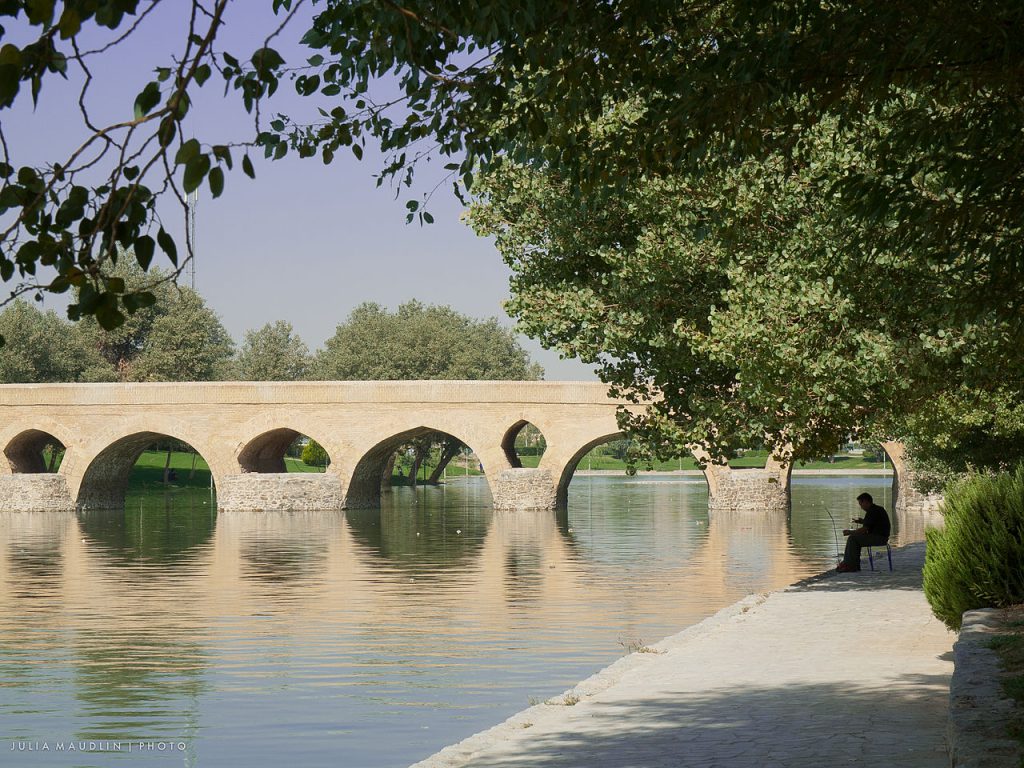
The Shahrestan Bridge, the oldest of Isfahan’s five historic bridges, stands east of the city’s center as a remarkable relic of ancient engineering. Its foundations date back to the Sasanian Empire, imbuing the structure with a timeless aura. Over centuries, the bridge has been carefully restored, with significant renovations carried out during the Buyid and Seljuk periods, each adding to its architectural elegance.
The bridge’s design is a masterclass in engineering, featuring two parabolas that skillfully manage the river’s flow. The horizontal parabola curves westward, providing structural support, while the vertical parabola ensures that the bridge’s apex remains perfectly centered. At 108 meters long and 5.2 meters wide, the Shahrestan Bridge exemplifies the meticulous craftsmanship and advanced techniques of its era.
The bridge’s dual-layered arches create a captivating visual spectacle, where thirteen large arches embrace eight smaller ones, ingeniously arranged to disperse pressure and allow floodwaters to pass smoothly. This combination of aesthetic beauty and functional brilliance highlights the bridge’s ability to harmonize with the natural forces of the Zayandeh Rud River. As both an architectural marvel and a functional piece of infrastructure, the Shahrestan Bridge continues to inspire admiration, standing as a proud testament to the ingenuity of ancient Persian builders.
Choobi (Joui) Bridge
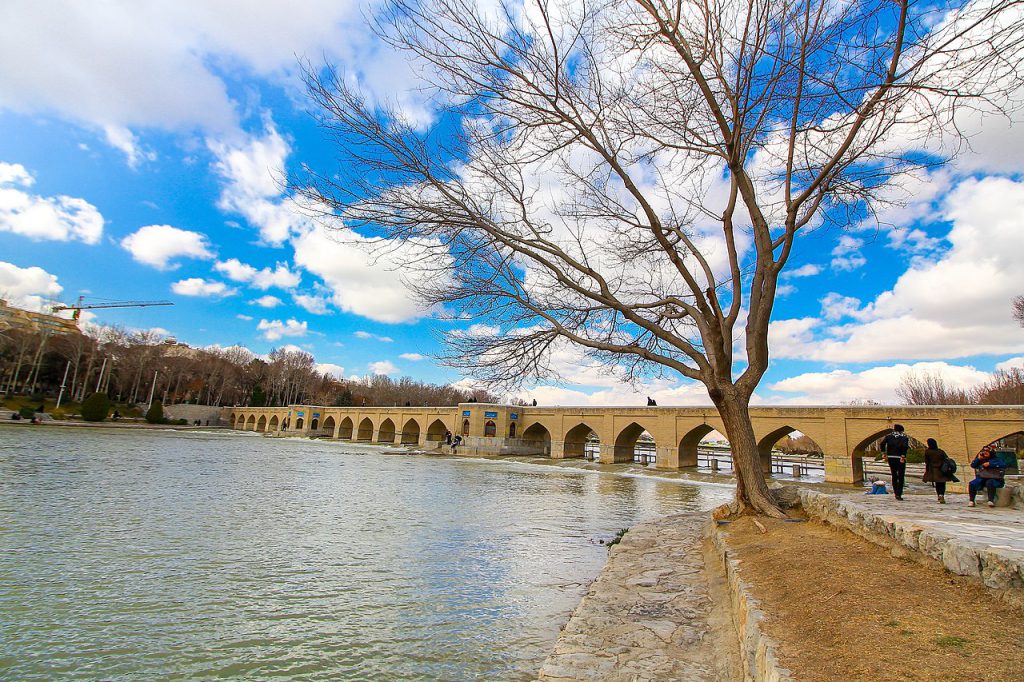
Nestled along the west bank of the Zayandeh River, the Choobi Bridge stands as a testament to Isfahan’s rich history and architectural prowess. Originally built in 1665 by Shah Abbas II, this remarkable structure was designed to serve as a vital connection between the royal gardens on the north bank and the magnificent mansions that surrounded it.
Unlike its more public counterparts, the Choobi Bridge was primarily reserved for the exclusive use of the shah and his courtiers. The bridge’s four-meter width and 147-meter length are punctuated by 21 grand arches, creating a striking visual spectacle. The name “Choobi” (meaning “wooden” in Farsi) reflects the bridge’s unique construction, with a wooden deck built over a foundation of Persian stone. This ingenious design allowed the waters of the Zayandeh River to flow through a stream, known as the “Joui,” adding to the bridge’s captivating charm.
Marnan Bridge
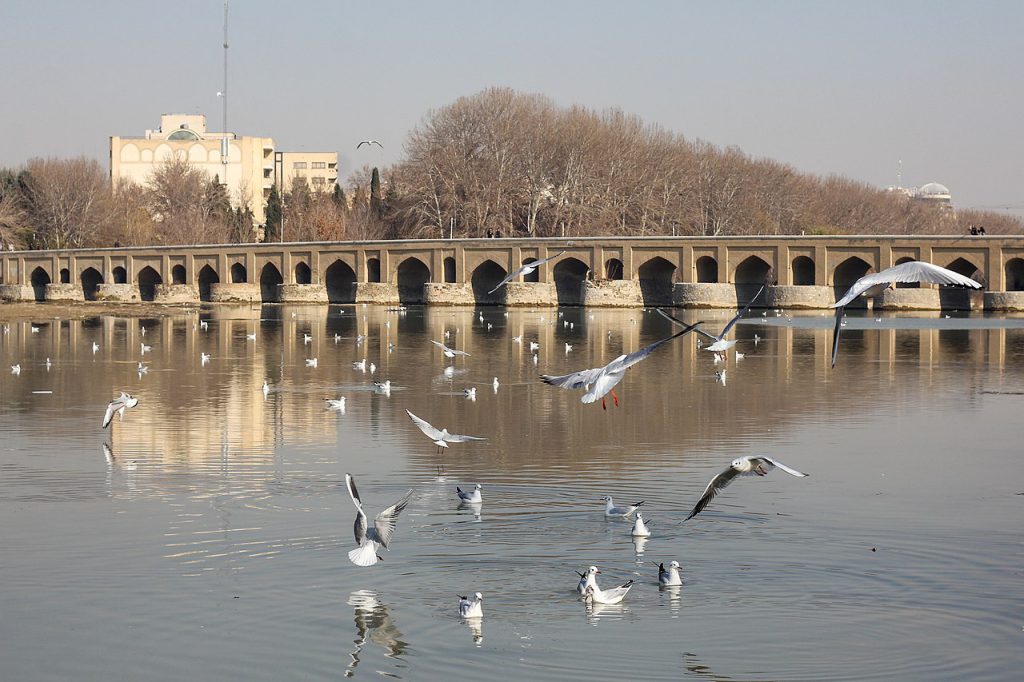
The Marnan Bridge, originally built during the Sassanid era, stands as a remarkable blend of history and nature, connecting the ancient Marnan community with the lively Armenian neighborhood of Jolfa. Known also as the Mehrbin Bridge, this structure is steeped in mysticism, with its name believed to be derived from a nearby Mithraism temple. The bridge’s historical journey continued through the 17th century when Khajeh Sarfaraz meticulously reconstructed it, earning it the additional name of Sarfaraz Bridge. At 175 meters in length and 4.7 meters in width, the bridge invites you to traverse its span, offering a passage through time and cultures.
As you walk along the bridge, you’ll encounter the contrasting energies of the Zayandeh Rud River. On the eastern side, the sound of a gentle waterfall fills the air, creating a refreshing and invigorating atmosphere, perfect for soaking in the serene beauty of nature. On the western side, the stillness of the water provides a calm, reflective space, offering a peaceful retreat from the world. Today, the Mehrbin Bridge has become a cherished destination, where visitors gather for leisurely picnics, admire the breathtaking river views, and immerse themselves in the tranquil ambiance of the Zayanderud River.
The bridge stands not only as a testament to Isfahan’s rich heritage but also as a beloved spot where history and nature intertwine, inviting all who visit to create lasting memories amidst its enchanting surroundings.
FAQs about Isfahan Historical Bridges
Q1: What are Isfahan’s historical bridges known for?
A1: Isfahan’s historical bridges are known for their beautiful architecture and cultural significance.
Q2: How many arches does the Si-o-Se Pol bridge have?
A2: The Si-o-Se Pol bridge has 33 arches.
Q3: What makes Khaju Bridge special?
A3: Khaju Bridge is special because of its beautiful design and dual function as both a bridge and a dam.
Q4: How old is the Shahrestan Bridge?
A4: Shahrestan Bridge is the oldest bridge in Isfahan, dating back to the Sasanian Empire.
Q5: Who used the Choobi (Joui) Bridge in the past?
A5: The Choobi (Joui) Bridge was used by Shah Abbas II and his courtiers.
Last Words: Explore the Best of Isfahan Historical Bridges with a Customized Tour
Isfahan historical bridges in Iran are more than just places to cross the river. They are lasting symbols of the city’s rich cultural history. Each bridge has a unique design that reflects the elegance and sophistication of the past. The intricate patterns and arched structures are not only impressive engineering feats, but also works of art that tell stories about Isfahan’s past. These bridges gracefully span the Zayandeh Rud River, serving as both practical structures and poetic connections between the city’s storied history and its vibrant present.
If you want to truly immerse yourself in the captivating world of Isfahan historical bridges, a customized tour is the way to go. That’s where To Iran Tour comes in. As a leading provider of Iran tours and travel packages, we are dedicated to designing exceptional experiences that cater to your unique preferences. Our team of experts will work closely with you to craft an itinerary that showcases the best of Isfahan historical bridges, ensuring you have a truly memorable journey.
Let us be your gateway to discovering the heart and soul of this remarkable city.

